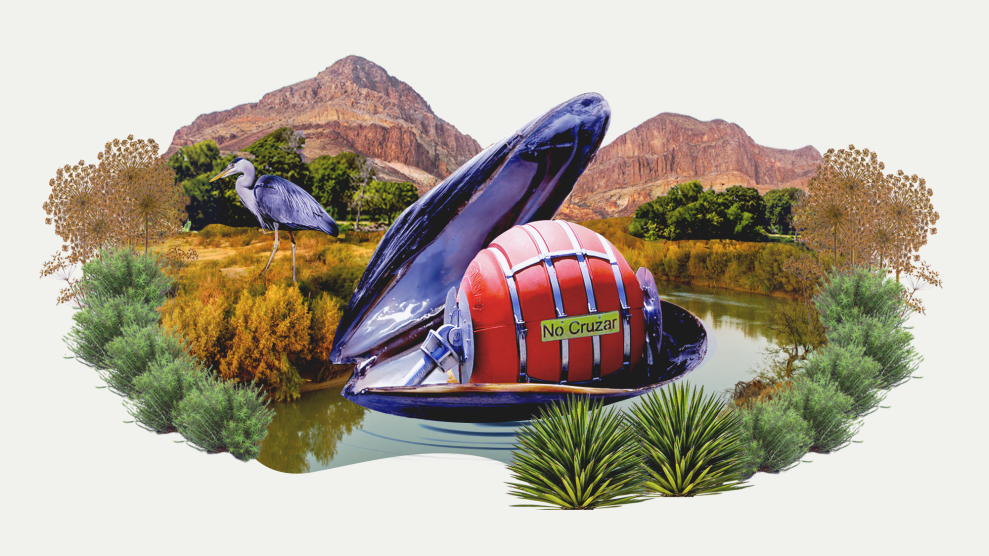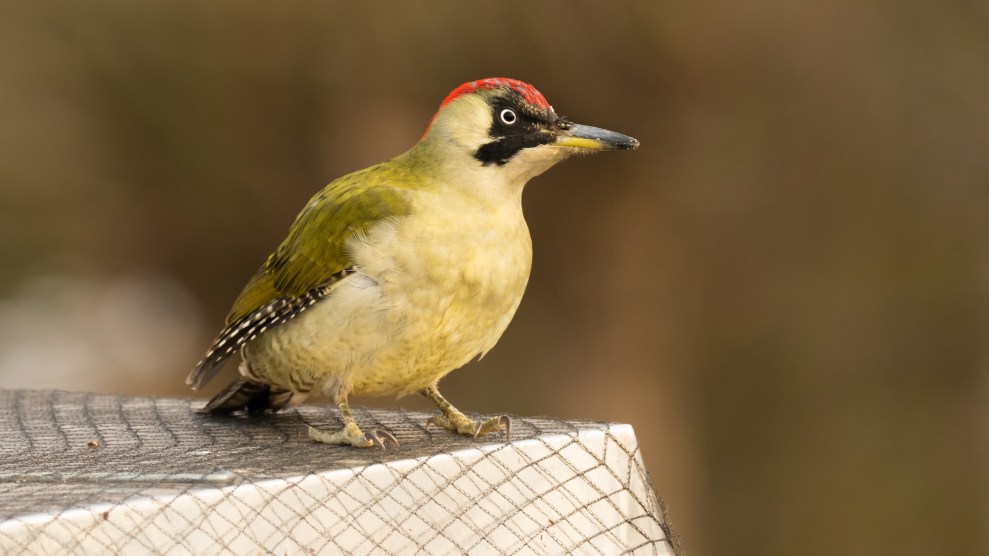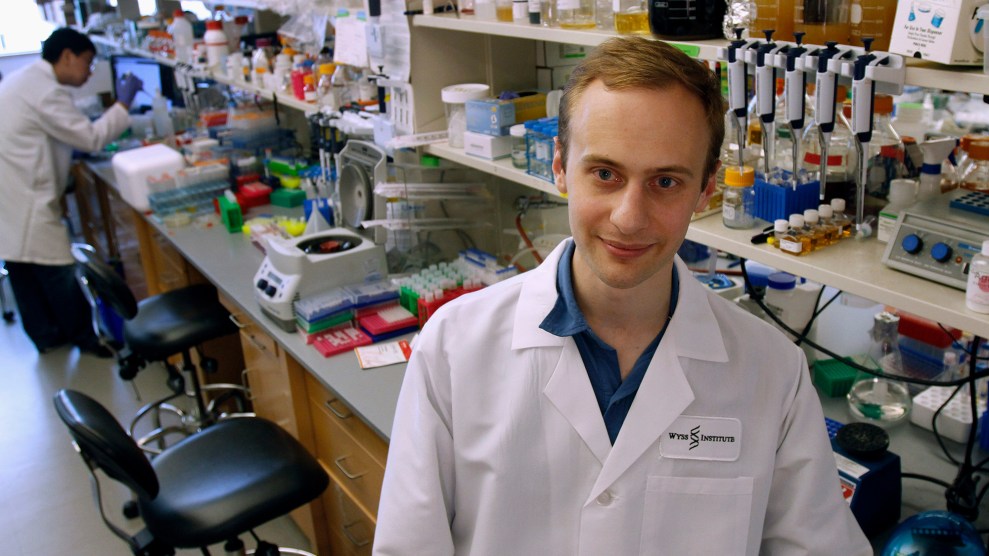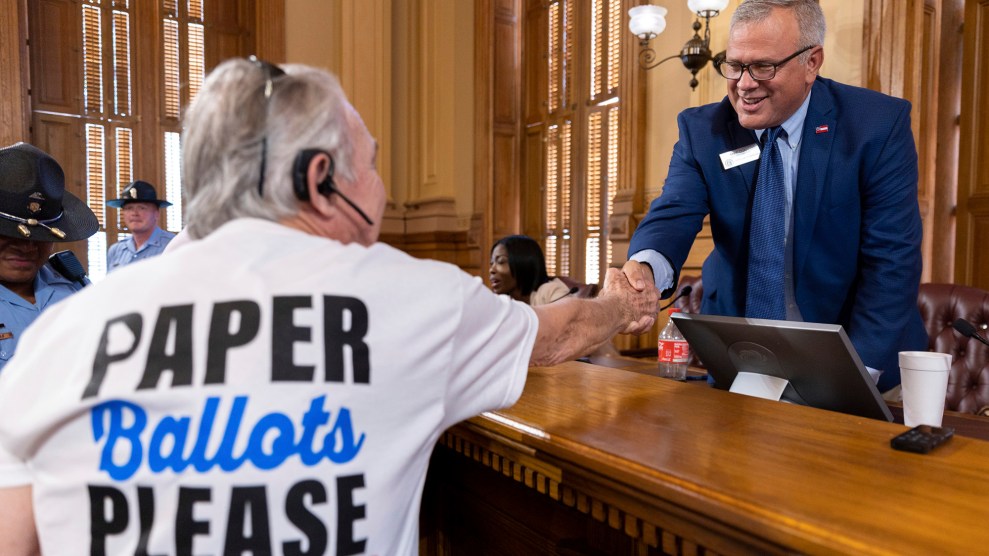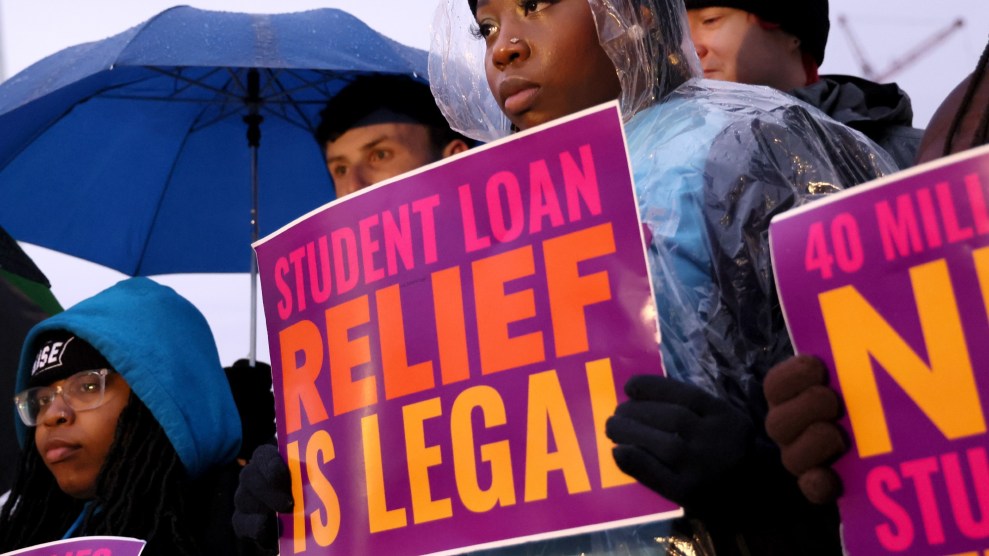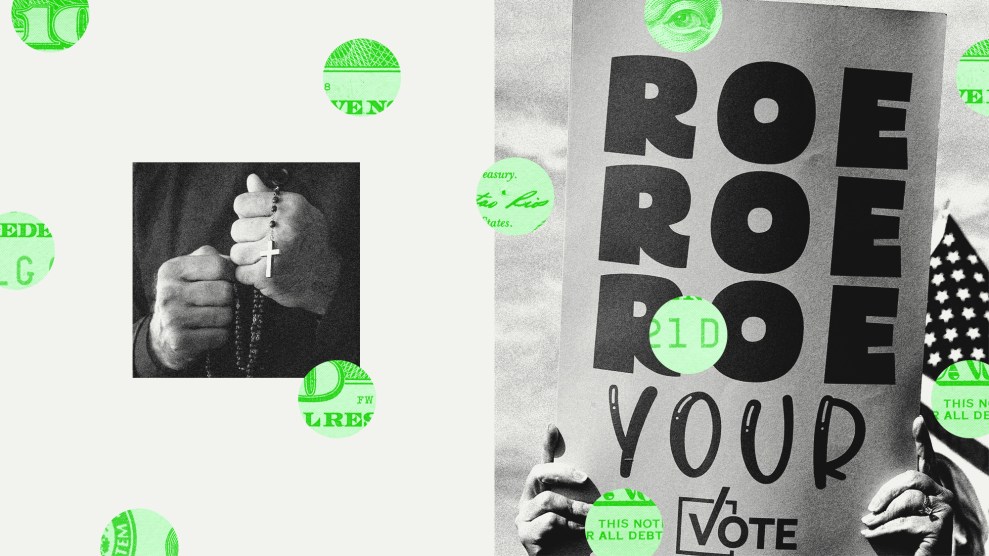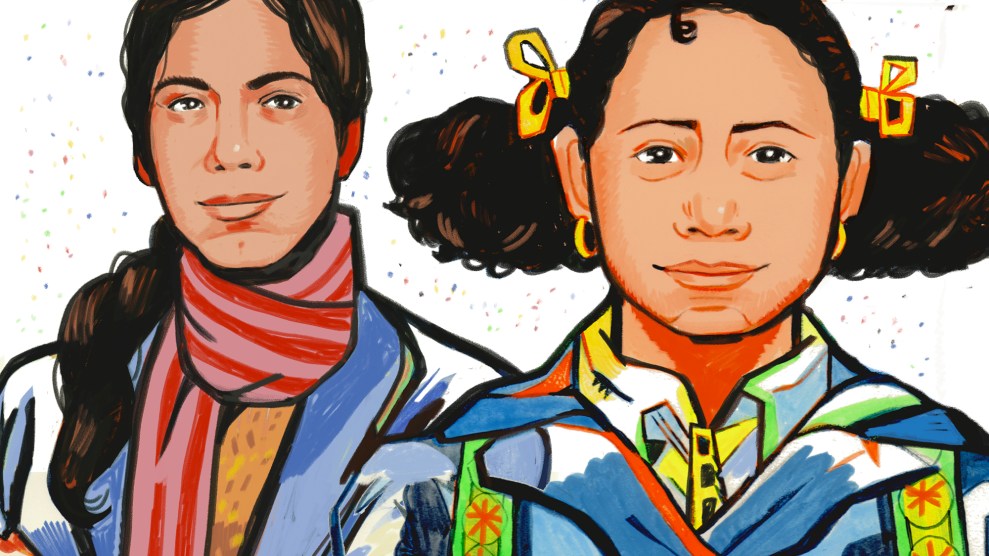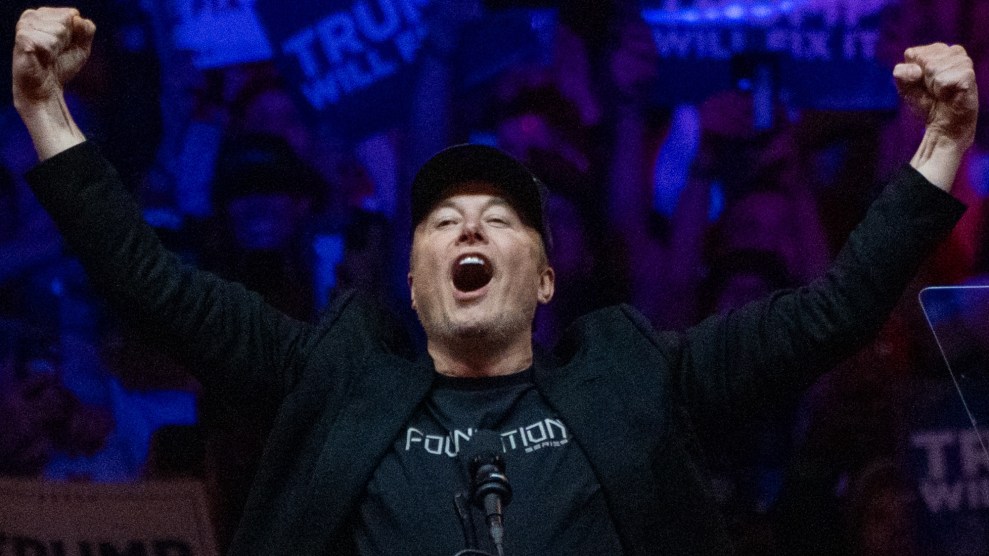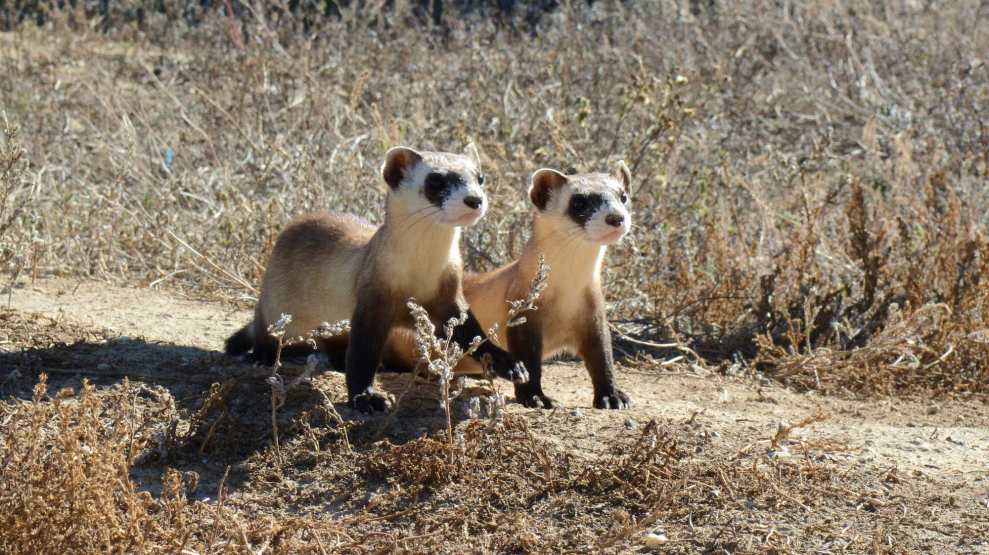
A pair of black-footed ferret kits survey the shortgrass prairie from their outdoor enclosures at the National Black-footed Ferret Conservation Center in ColoradoTom Koerner/Zuma
This story was originally published by Inside Climate News and is reproduced here as part of the Climate Desk collaboration.
The world’s wildlife are facing a barrage of threats caused by climate change, from the loss of suitable habitat to dwindling food supplies. As a result, endangered species across the US are edging closer to extinction at alarming rates—and if they disappear, critical genetic information could vanish with them.
In a new initiative announced on October 3, the US Fish & Wildlife Service is working with the nonprofit Revive & Restore and other partners to create a “genetic library” of the country’s endangered species—before it’s too late.
Through a process called biobanking, FWS field staff are gathering biological samples such as blood, tissues and reproductive cells from animals to be cryogenically preserved at extremely low temperatures (at least -256 degrees Fahrenheit) and stored at a USDA facility in Colorado. The samples will also be genetically sequenced and this information will be uploaded to a publicly available database called GenBank, where researchers can study them and compare their genomes to other members of their species.
This frozen library of living cells could be crucial for current and future conservation efforts, particularly for helping introduce genetic diversity into captive breeding programs working to rebuild species populations or even for cloning, experts say.
Twenty-first century “conservation challenges require 21st century conservation tools,” Seth Willey, deputy assistant regional director of ecological services for the FWS’s Southwest region, told Inside Climate News in an email. “Biobanking is one such tool that allows us to preserve some of the biodiversity that exists today and ensure it isn’t lost forever.”
Since the project launched in January, partners have already collected and cryopreserved samples from five endangered species, including the Mexican wolf, Florida bonneted bat and Sonoran pronghorn. Though the pilot phase of the program includes just 24 US endangered mammals, the end goal is much more ambitious: to biobank every endangered mammal in the country, creating “a repository for our American legacy” of biodiversity, according to Ryan Phelan, the executive director of Revive & Restore.
Once common across the vast prairies of the Great Plains, the black-footed ferret is now one of the most endangered species in North America, with just around 300 individuals found in the wild. To help rebuild its population, the FWS launched a captive breeding program in 1992, which has introduced thousands of captive-bred black-footed ferrets into the wild since its creation.
However, a ticking time bomb lurks within this species’ genome. Nearly every black-footed ferret is descended from just seven individuals, making their gene pool strikingly similar and leaving entire populations vulnerable to environmental stressors such as disease.
At least, that was the case up until 2020, when history was made at a small conservation center in Fort Collins, Colorado: Scientists successfully cloned a black-footed ferret, nicknamed Elizabeth Ann, using tissue from a living sample frozen in the mid-1980s. This sample was from a black-footed ferret that had no surviving offspring, meaning that many of her genes are genetically diverse from those in the rest of the species. The project was led by many of the same partners in the new biobanking pipeline, including the FWS, Revive & Restore and the San Diego Zoo Alliance.
“This is an extraordinary thing when you can have cells that have been in the freezer for decades, and use those to produce animals that can interbreed with the population and restore the resilience that has been lost because of genetic erosion,” said Oliver Ryder, the director of conservation genetics at the San Diego Zoo Wildlife Alliance. Before being used to clone Elizabeth Ann, the sample was stored at the San Diego Zoo’s Frozen Zoo, one of the world’s largest biobanking facilities, which stores more than 10,000 living cell cultures and reproductive cells from nearly 1,000 taxa. Now, with this new project, the biobanking approach has reached a national level.
The federal government “has a responsibility to coordinate actions on behalf of citizens and the loss of biodiversity is a crisis of our time,” Ryder said. “A lot of endangered species are critically small, and they could end up in the same situation as the black-footed ferrets. So why not anticipate, [and] why not use this as a tool in recovery?”
Elizabeth Ann the ferret has not yet been introduced to the wild or bred with other populations of black-footed ferrets because scientists are still assessing the potential risks of introducing her genome into the existing gene pool. However, her existence shows how important it is to proactively biobank samples from endangered species, according to Phelan.
“This could not have happened unless some individuals were so prescient 40 years ago to actually bank those living tissues,” she said. “They were biobanking not really knowing even how science would change.”
With this in mind, Phelan and the team at Revive & Restore submitted a proposal to the FWS to create the pilot for the biobanking pipeline program to ensure that future generations have access to these types of living materials. The project relies on a contingent of FWS field biologists—who are often already gathering biological samples from endangered species in the wild—to obtain small tissue biopsies from living animals to be frozen.
“Though there are no plans for near term use, cryogenically preserved cell culture samples are an insurance policy against future losses of biodiversity in the wild,” said Willey.
Currently, the biobanking project is just about collecting and storing the living tissues, and cataloging their genomes rather than actively pursuing strategies such as cloning. Yet these species’ genomes could start helping researchers assess genetic diversity and identify at-risk populations in the wild right away. And the frozen samples they store may someday be used to help support conservation technology that doesn’t even exist yet.
